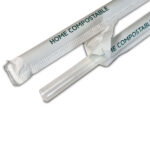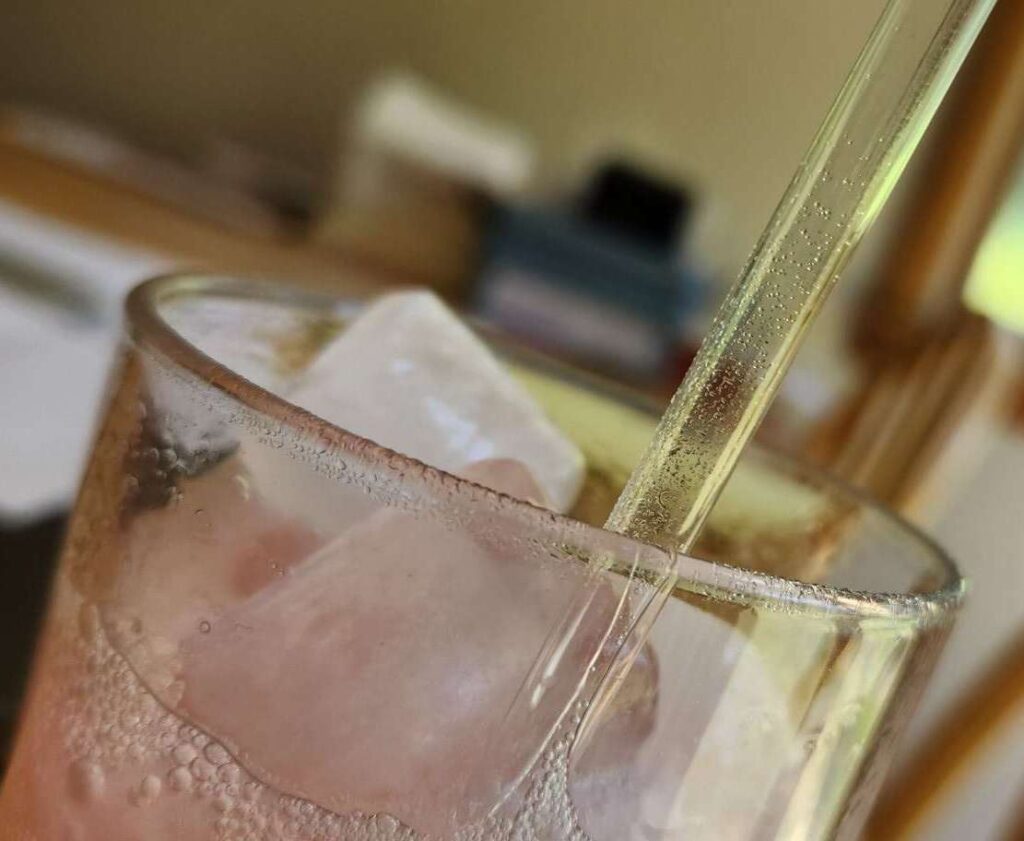The world is waking up to the urgent need for sustainable alternatives to single-use plastic products that generate single-use plastic waste. Among these, regular plastic straws have become a symbol of environmental pollution, especially in oceans and waterways. Thankfully, the emergence of biodegradable straws – especially biodegradable plastic straws – offers a promising solution to this growing concern. In this comprehensive guide, we will delve into the world of biodegradable straws, exploring their benefits, functionality, and the future they hold in our quest for sustainable sipping.
Introduction
Every day, millions of plastic straws are used and discarded worldwide, contributing to the mounting plastic waste crisis. However, the detrimental impact of plastic straws extends far beyond overflowing landfills. These small but significant items pose a significant threat to marine life and ecosystems, as they often end up in our oceans, causing pollution and endangering aquatic species. To combat this issue, the adoption of biodegradable straws has gained traction in recent years.
Understanding Biodegradable Straws
Biodegradable drinking straws are designed to break down naturally and return to the environment without causing harm or leaving behind non-degradable waste. These straws are typically made from a variety of natural materials, such as plant fibers, bamboo, or bioplastics derived from renewable resources. The primary goal is to provide a viable alternative to plastic straws while minimizing environmental impact.
Environmental Impact of Plastic Straws
Plastic straw pollution has reached alarming levels. Studies indicate that over 8.3 billion plastic straws pollute the world’s beaches, making them one of the top ten items found in coastal cleanups. Marine animals, including turtles, seabirds, and fish, often mistake these straws for food, leading to ingestion and entanglement. The dire consequences of plastic straw pollution underscore the pressing need for eco-friendly alternatives.
How Biodegradable Straws Work
The key to the functionality of biodegradable straws lies in their decomposition process. Unlike traditional plastic straws that persist for hundreds of years, biodegradable straws break down over time due to the action of natural microorganisms, heat, and moisture. Factors such as material composition and environmental conditions can influence the rate of degradation. As a result, these straws offer a more sustainable and environmentally friendly option for sipping on your favorite beverages.

Types of Biodegradable Drinking Straws

The market for environmentally friendly straws has expanded rapidly, offering a diverse range of alternatives to choose from. Paper straws, made from sustainably sourced paper fibers, are widely popular due to their affordability and biodegradability. Bamboo straws, on the other hand, provide a more durable and reusable option, ideal for those seeking a longer lifespan for their straws. Additionally, straws made from polylactic acid (PLA), a bioplastic derived from corn starch or sugarcane, offer a compostable alternative that mimics the convenience of plastic straws.
KonzaWare introduced a new leading-edge sustainable straw on the market that is made of sustainable wood pulp. It is clear (or black) in appearance and looks and feels like a regular plastic straw. It is flexible, yet durable. And it is certified “home compostable“. That means that you can throw it away in your backyard home compost heap where it will disintegrate in weeks with no remaining microplastics. It supports a circular economy when microorganisms consume the material leaving behind healthy soil for plant life.
You can see these beautiful biodegradable plastic straws here.
Advancements in Biodegradable Straw Technology
As sustainability gains prominence, researchers and manufacturers have dedicated their efforts to improving the performance and usability of sustainable straws. Innovations in material science have resulted in sturdier and more flexible options that can withstand different beverage temperatures without compromising integrity. Additionally, advancements in production techniques have made mass production of biodegradable straws more efficient, allowing for wider adoption and availability.
Consumer Adoption and Awareness
Consumer demand for eco-friendly products has been a significant driving force behind the rise of biodegradable drinking straws. Increasingly, individuals are becoming conscious of their environmental footprint and actively seeking sustainable alternatives. By embracing biodegradable straws, consumers play a crucial role in reducing plastic waste and supporting a circular economy. Raising awareness about the benefits of these straws and educating the public about their availability and proper use are vital steps toward achieving widespread adoption.
Industry Perspective
The food and beverage industry plays a pivotal role in driving the transition to sustainable practices. Many establishments have started replacing plastic straws with biodegradable alternatives, both in response to consumer demand and as part of their corporate responsibility initiatives. Furthermore, government regulations and policies are being implemented to restrict the use of plastic straws and encourage the adoption of environmentally friendly alternatives. The combined efforts of the industry and government are instrumental in effecting lasting change.
Overcoming Challenges and Concerns
While biodegradable straws offer significant advantages, challenges persist in terms of cost, scalability, and misconceptions. The cost of producing biodegradable straws can be higher than that of their plastic counterparts, making them less accessible to certain businesses and consumers. However, as technology advances and production scales up, prices are likely to decrease. Additionally, addressing misconceptions surrounding biodegradability, compostability, and durability will contribute to the wider acceptance and understanding of these sustainable alternatives.
The Role of Biodegradable Straws in the Circular Economy
Biodegradable straws represent a crucial component of the circular economy, a system that aims to minimize waste and maximize resource efficiency. By incorporating biodegradable straws into this system, waste management practices can be transformed. These straws can be recycled or composted, ensuring that they are diverted from landfills and reintegrated into the production cycle. Collaborating with other eco-friendly products and practices further strengthens the circularity of the entire ecosystem.
Consumer Tips for Choosing Biodegradable Straws

To make informed choices, consumers should consider several factors when selecting biodegradable straws. Checking for product labels and certifications that guarantee compostability and eco-friendliness is essential. Proper disposal methods, such as composting or recycling, should be followed to ensure that the straws fulfill their intended purpose. Furthermore, supporting local and ethical brands that prioritize sustainability can have a positive impact on both the environment and the economy.
Case Studies: Success Stories and Best Practices
Real-life examples of businesses successfully implementing sustainable straws can inspire others to follow suit. By examining case studies, we can gain insights into the challenges faced, strategies employed, and positive outcomes achieved. From small cafes to large restaurant chains, success stories showcase the viability and benefits of embracing sustainable sipping practices.
The Future of Sustainable Sipping
The future of sustainable sipping holds great promise. Continued innovation and research will likely lead to further advancements in eco-friendly straw technology. Collaboration among various stakeholders, including scientists, manufacturers, and policymakers, will be essential in driving this progress. As we work collectively toward a more sustainable future, biodegradable straws will play a crucial role in reducing plastic waste and preserving our natural resources.
Conclusion
In conclusion, the best biodegradable straws offer a compelling solution to the environmental challenges posed by single-use plastic straws. With their ability to naturally decompose and return to the environment without leaving harmful residues, these straws provide a sustainable alternative for sipping our favorite beverages. However, consumer awareness, industry participation, and ongoing research are essential to realize their full potential. By embracing biodegradable straws, we can contribute to a more sustainable and eco-friendly future.
FAQs
Q1. Are biodegradable drinking straws as durable as plastic straws?
Biodegradable straws have made significant advancements in terms of durability. While they may not be as long-lasting as plastic straws, manufacturers have developed sturdier options that can withstand regular use. However, it’s important to remember that eco-friendly straws are designed to break down over time, so they may not have the same lifespan as their plastic counterparts.
Generally speaking, paper straws can become soggy and fall apart in your lips after a few sips as the paper becomes wet. While PLA and corn starch straws are stiff, they can become brittle and crack over time.
KonzaWare straws are clear (or black) in appearance and ductile. They don’t easily crack and break when bent.
can be brittle in use
Q2. Can these eco-friendly straws be recycled?
It depends on the specific material used to make the straws. Some sustainable drinking straws, such as those made from paper or bamboo, can be recycled with other paper or organic waste. However, it’s crucial to check the product labels or consult local recycling guidelines to ensure proper disposal.
KonzaWare biodegradable straws are home compostable and return to the soil once they break down.
Q3. Do biodegradable straws require special composting facilities?
Certain types of eco-friendly straws, such as those made from PLA or other bioplastics, require specific industrial composting facilities for optimal breakdown. However, paper and bamboo straws can often be composted at home or through municipal composting programs. It’s essential to follow proper composting guidelines to ensure effective decomposition.
KonzaWare straws are certified “home compostable” which means you can throw them in your backyard compost heap where they will disintegrate in weeks. Microorganisms consume the material, leaving no microplastics behind. That creates healthy soil for plant life.
Q4. Are biodegradable straws more expensive than plastic straws?
Currently, sustainable drinking straws may be slightly more expensive than traditional plastic straws. However, as technology improves and production scales up, costs are expected to decrease. Additionally, considering the environmental benefits and consumer demand for sustainable alternatives, the long-term cost-effectiveness of biodegradable straws becomes evident.
KonzaWare biodegradable straws are about the same price as paper straws, but provide the consumer the sipping experience that they’re used to when using regular plastic straws.
Q5. Can I use biodegradable drinking straws with hot beverages?
The suitability of biodegradable drinking straws for hot beverages depends on the specific material and design. While some sustainable straws can handle hot liquids for a short period, most are not intended for hot beverages as the material will warp. Also, sipping a hot beverage is not advisable as it may burn the lips.
Q6. Where can I buy the best biodegradable plastic drinking straws?
The best biodegradable plastic drinking straws are found at KonzaWare. Order online or contact us for a distributor near you.




